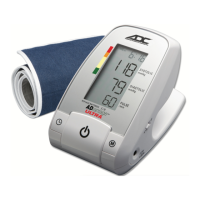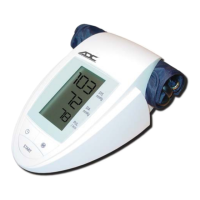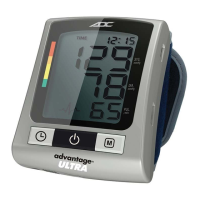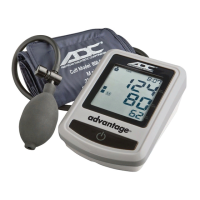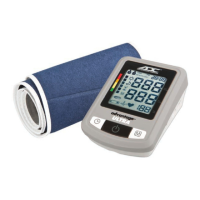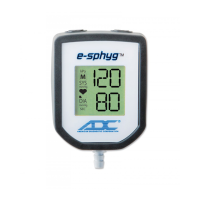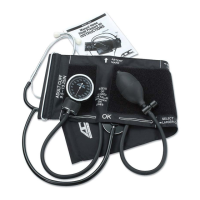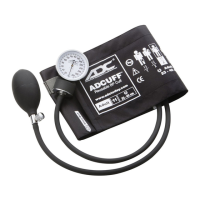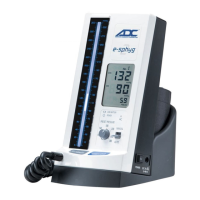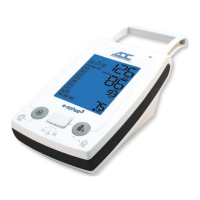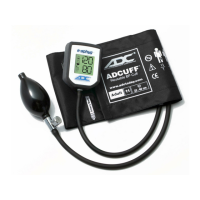Do you have a question about the ADC Advantage 6021N and is the answer not in the manual?
Covers essential warnings and precautions for safe operation, including medication interactions and environmental factors.
Step-by-step instructions for correctly inserting AA batteries into the device, including warnings about battery types.
Guidance on connecting and using the AC power adapter for continuous operation, emphasizing the use of the provided adapter.
Procedures for setting the integrated clock and date, essential for accurate measurement logging and recall.
Details how to choose between standard single measurement and MAM Averaging mode for enhanced accuracy.
Explains the process of triple measurement averaging for more reliable results, including the device's automatic analysis.
Essential preparation steps before taking a measurement, including avoiding stimulants, resting, and proper clothing.
Identifies common errors that can affect accuracy, such as arm support, cuff fit, and measurement repetition intervals.
Instructions on how to start the measurement process after the cuff has been correctly positioned and connected to the monitor.
Details the inflation, deflation, pulse detection, and result display during the measurement cycle.
Lists potential error codes (ERR 1, ERR 2, etc.) and provides corresponding causes and recommended solutions for troubleshooting.
Addresses common issues like blank display or no pressure rise, offering remedies for device malfunctions.
Provides solutions for frequent measurement failures, inaccurate readings, or discrepancies with doctor's measurements.
Covers essential warnings and precautions for safe operation, including medication interactions and environmental factors.
Step-by-step instructions for correctly inserting AA batteries into the device, including warnings about battery types.
Guidance on connecting and using the AC power adapter for continuous operation, emphasizing the use of the provided adapter.
Procedures for setting the integrated clock and date, essential for accurate measurement logging and recall.
Details how to choose between standard single measurement and MAM Averaging mode for enhanced accuracy.
Explains the process of triple measurement averaging for more reliable results, including the device's automatic analysis.
Essential preparation steps before taking a measurement, including avoiding stimulants, resting, and proper clothing.
Identifies common errors that can affect accuracy, such as arm support, cuff fit, and measurement repetition intervals.
Instructions on how to start the measurement process after the cuff has been correctly positioned and connected to the monitor.
Details the inflation, deflation, pulse detection, and result display during the measurement cycle.
Lists potential error codes (ERR 1, ERR 2, etc.) and provides corresponding causes and recommended solutions for troubleshooting.
Addresses common issues like blank display or no pressure rise, offering remedies for device malfunctions.
Provides solutions for frequent measurement failures, inaccurate readings, or discrepancies with doctor's measurements.
| Category | Blood Pressure Monitor |
|---|---|
| Model | Advantage 6021N |
| Type | Upper Arm |
| Display | LCD |
| Measurement Method | Oscillometric |
| Measurement Range (Pressure) | 0-300 mmHg |
| Accuracy (Pressure) | ±3 mmHg |
| Memory | 60 readings |
| Power Source | 4 x AA Batteries |
| Automatic Shut-off | Yes |
| Automatic Inflation | Yes |
| One-Touch Operation | Yes |
| Irregular Heartbeat Detector | Yes |
| Hypertension Indicator | Yes |
| WHO Indicator | Yes |
| Warranty | 5 years |
| Accuracy (Pulse) | ±5% of reading |
| Cuff Size | 22-32 cm |
